UCB SRP Highlights and Impacts (May 1, 2025)
The Project 1 team made significant progress in PFAS-pesticide research and related policy engagement in 2024-25. Contaminated drinking water from environmental pollutants such as PFAS pose a rising threat to public health and PFAS-pesticides are a recently identified source of environmental PFAS. We published the first spatial analysis that estimated the application of PFAS-contaminated pesticides in California and identified public supply wells located close to intensive PFAS-pesticide application (Libenson, 2024). We estimated that 18.5 million people (or approximately half of the population in California) are served by water sourced from public supply wells within 1 km of PFAS-pesticide application. This poses a potentially significant risk to drinking water quality because the vast majority of PFAS are not tested in water systems prior to household distribution. We leveraged our PFAS-pesticide data through the UCSF EaRTH Center’s Reach the Decision Makers program to support recommendations that prioritize drinking water and community needs. The California Department of Pesticide Regulation (DPR) recently developed an updated method for identifying potential groundwater contaminants, however, PFAS-pesticides are not included in the current list of criteria used by DPR to identify and regulate potential groundwater contaminants. This year the DPR plans to update their regulations to reference the new method and the updated Groundwater Protection List (GWPL). Our team will focus on reviewing the updated regulations and making policy recommendations such as including PFAS-pesticides on the list of potential groundwater contaminants. These recommendations will be shared with DPR staff, and our team will work with staff on implementation.
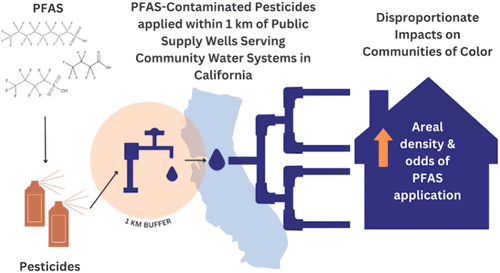
Graphical abstract from Libenson et al., 2024
With collaborators and stakeholders, the Admin/Research Translation Core team continued to advance the uptake and application of the Key Characteristics (KCs) approach in hazard assessment in 2024-25. We published papers on: expanding the concept and its application (including the potential to integrate with the AOP approach); providing guidance on application of the KCs in the IARC Monographs (including assessment of endpoints for evaluating mechanistic evidence of carcinogenic hazard); and a consensus on the KCs of Metabolism Disruptors (Extramural paper of the month in Feb/March 2025 Environmental Factor). We developed a searchable, online database of assays and endpoints ⎯ which we shared with CalEPA, the National Toxicology Program and IARC prior to its general release to the public, and via a companion paper in Database. We are finalizing a database (and associated paper) of ToxCast/Tox21 assays for the KCs of carcinogens. We created a data-driven model based on deep learning that can quantitatively assess the strength of evidence for a particular KC, a machine-learning tool to predict which chemical structures lead to nuclear receptor binding (KC of carcinogens #8), and are exploring Natural Language Processing approaches to evaluate the literature and predict KCs. Our work was shared at SOT, EMGS, ASCCT and an NIEHS Keystone Science Lecture (the latter was featured in the NIEHS Feb/March 2025 Environmental Factor). Further engagement involved updating keywords used by IARC and helping L’oreal’s R&D team incorporate the KCs to replace animal testing. As shared on our KC website, our work has impacted the field of hazard assessment as reflected by the incorporation of KCs into agency handbooks and evaluations by NTP (Report on Carcinogens and handbook), CalEPA’s OEHHA (Proposition 65 reports), IARC Monographs and IRIS (handbook and toxicological review). Andres Cardenas served on the expert committee for the forthcoming IARC Monograph 136 on talc and acrylonitrile and co-authored a Lancet Oncology paper. Acrylonitrile was classified as carcinogenic to humans (Group 1) and talc was classified as probably carcinogenic to humans and strong mechanistic evidence in experimental systems was found for both agents using the KC framework. A growing number of studies have used the KCs as a framework to explore hazard and mechanisms, e.g. understanding how AhR and its many ligands influence the immune system and mechanistic evidence for TiO2 nanoparticle-induced lung carcinogenicity.
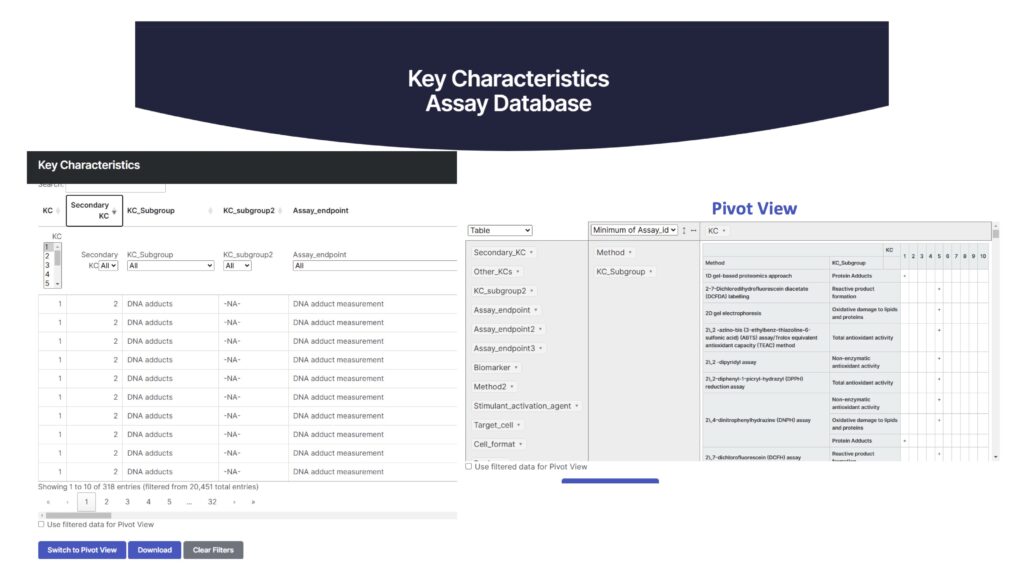
Martyn Smith received the 2024 Herbert E. Stokinger Award from the American Conference of Governmental Industrial Hygienists (ACGIH) in recognition of his contributions to understanding the toxicity and adverse health effects of benzene exposure. He presented, Hazards of Occupational and Environmental Exposure to Benzene, at the awards ceremony. In 2024, the ACGIH revised the Threshold Limit Value (TLV) for benzene from 0.5 parts per million (ppm) to 0.02 ppm, with the goal of minimizing the risk of bone marrow toxicity, chromosomal damage, myelodysplastic syndrome, and acute myeloid leukemia in exposed workers. With the support of funding from the NIEHS SRP, Smith has generated key findings on the toxic effects benzene for around 40 years. With collaborators in the U.S. and China, he showed that hematotoxicity – measured as decreases in different types of white blood cells – was present in factory workers in China who were exposed to relatively low levels of benzene (~around 0.5 ppm in air). The findings, which also showed impacts on early progenitor cells and stem cells in the blood and bone marrow, were reported in an article published in the journal Science in 2004. Subsequent studies led by Smith and co-workers explored susceptibility to benzene toxicity, metabolism of benzene to toxic metabolites, mechanisms of benzene toxicity, and demonstrated that benzene exhibits eight of the ten key characteristics of carcinogens. This story was featured in the Best of Berkeley Public Health 2024 newsletter.
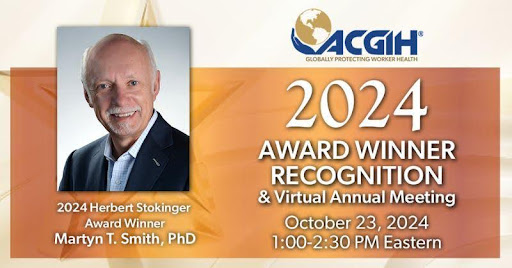
UCB SRP researchers and alumni have continued to expand the concept of the Exposome and its reach and application since 2010. In Science in 2010, Stephen Rappaport and Martyn Smith defined the exposome as representing “the combined exposures from all sources that reach the internal chemical environment” and concluded that the exposome could best be measured by monitoring the internal chemical environment of the human body during critical windows of exposure. Rappaport organized two National Academy meetings on the exposome in 2010 and 2011 and Smith spoke at the European Union in Brussels in 2011, leading to EU funding of exposomics projects. In 2011, Smith et al., published Benzene, the exposome and future investigations of leukemia etiology which proposed characterizing the ‘exposome’ of human leukemia by using unbiased laboratory-based methods to find the unknown ‘environmental’ factors that contribute to leukemia etiology. The potential for using the exposome concept to study cumulative impacts and mixtures arose out of a “Seeing the Whole Picture” meeting that Amy Kyle of our Research Translation Core organized in 2013. In 2015, Smith et al., proposed using exposomics to assess cumulative risks and promote health by studying all the small molecules in the body and their influence on biological pathways that lead to impaired health in vulnerable populations. A 2016 paper, based on findings from the Biological Response Working Group of the NIEHS Exposome Workshop held in January, 2015, concluded that by linking exposures to specific biological responses, exposome research could serve to improve understanding of the mechanistic connections between exposures and health to help mitigate adverse health outcomes across the lifespan. In 2012, Rappaport and colleagues reviewed the potential for adductomics to measure reactive electrophiles, with a focus on human serum albumin (HSA-Cys34). Their 2018 adductomics study reported that benzene can increase leukemia risks via multiple pathways involving a variety of reactive molecules in exposed workers. They also revealed a link between colorectal cancer, gut microbiota and redox biology; identified HSA modifications associated with childhood leukemia in newborn dried blood spots; and revealed adducts related to antioxidant activity in workers exposed to diesel exhaust. Using a novel approach to characterize exposures in pre-diagnostic AML samples, a 2023 nested case-control study found evidence for a role of oxidative stress in AML pathogenesis, with potential implications for therapy targets. Rappaport co-authored numerous papers refining the exposome concept and applications, e.g. proposing a focus on the “functional exposome” in 2021. Former UCB SRP trainees, Fenna Sillé and Carsten Prasse, now Associate Professors and Director/Co-Director of the Exposome Collaborative at Johns Hopkins University, respectively, co-authored a 2020 paper on the potential for the exposome in risk assessment with Rappaport and others. Sillé, who studies the exposome in the context of immunology, also co-authored The Implementation Moonshot Project for Alternative Chemical Testing (IMPACT) toward a Human Exposome Project in 2024. She serves on the organizing committee of the 2025 Exposome Moonshot Forum (which will be held in Washington, D.C. on May 12-15, 2025) and will be a panelist, moderator and presenter in multiple sessions aimed at planning and shaping the roadmap. The concept of the exposome continues to gain broad traction. A PubMed search of “exposome” today reveals ~3,000 papers.
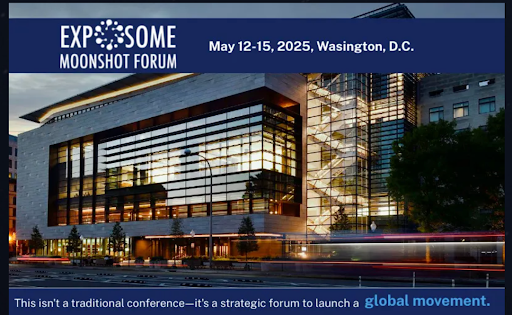
In 2022, UCB SRP celebrated 34 years of Science for a Safer World and SRP research success stories from research to policy and action. Joseph Wiemels (USC) highlighted ~20 years of research that elucidated risk factors and etiology of childhood leukemia in the California Childhood leukemia Study (CCLS; formerly the Northern California Childhood Leukemia Study). Funding from UCB SRP supported NCCLS design and sample collection from around ~2001 and directly supported research on childhood leukemia risk factors from ~2001-2013. Using a novel technique called molecular backtracking in CCLS samples and dried blood spots collected from newborns at birth, our team showed that certain genetic subtypes or childhood acute lymphoblastic leukemia and acute myeloid leukemia originate in utero with an initiating event such as a chromosomal rearrangement with additional secondary genetic alterations in childhood leading to the development of disease. Maternal and perinatal exposures such as chemical and infectious agents were found likely to be critical risk factors. An inactivating NQO1 polymorphism was associated with leukemias arising in the first 1-2 years of life and polymorphisms in MTHFR were associated with adult and childhood ALL. These findings revealed that low folate intake and compounds that are detoxified by NQO1 were likely to be important in elevating leukemia risk in children (summarized in a 2005 review.) Later studies showed that risk of childhood ALL was associated with paint exposure (2009); that risks of childhood ALL and AML were associated with exposure to tobacco smoking that varied by timing of exposure (before and/or after birth) and cytogenetic subtype (2013); evidence of a protective role for infection-related exposures early in life in both the non-Hispanic white and Hispanic populations (2012); and association of childhood ALL with a dysregulated immune function present at birth as indicated by low levels of IL10 (2012). Building on these earlier studies, more recent research has revealed a potential link between CMV and ALL etiology in children with underlying immune dysregulation (2023); association between epigenetic biomarkers of prenatal tobacco smoke exposure and gene deletions in childhood ALL (2021); causal implication of early-life tobacco exposure in aberrant RAG-mediated recombination in childhood ALL (2024); genetic variability in DNA repair genes and pathways in susceptibility to childhood ALL associated with environmental exposure to tobacco smoke (2025); and association of exposure to a mixture of PFAS in settled dust with an overall elevated risk of childhood ALL (2025). This body of research has expanded our understanding of risk factors, timing, and mechanisms of childhood leukemia and has implications for improved prevention and intervention.

In 2018, UCB SRP celebrated 30 years of Science for a Safer World and SRP research success stories from research to policy and action. Joy Carlson (Principal, J. Carlson Consulting) and Kent Udell (Professor of Mechanical Engineering at University of Utah and Emeritus Professor of Berkeley) demonstrated how SRP research has been applied in a collaborative, multi-disciplinary way to inform policy and action. Carlson gave a history of the emergence of the field of children’s environmental health and her work with Children’s Environmental Health Network (CEHN) – which she co-founded and directed for many years. CEHN, in concert with Berkeley SRP and other organizations, helped to bring about paradigm shifts in how exposures are viewed in the developing human, engaged in interdisciplinary collaborations, and informed public policy. Carlson shared key milestones: CEHN goes national (1992); NIEHS workshop on CEH research (1993); Release of Academy of Science report (1993); EPA established Office of Child Health (1997); EPA/NIEHS announce CEH Research Centers (1997); and, formation of Pediatric Environmental Health Specialty Units (1998). Udell gave the inaugural James Hunt Memorial Lecture in Research Translation in which he reflected on his groundbreaking work with James Hunt and Nicholas Sitar at UC Berkeley in developing the Steam Enhanced Extraction (SEE) technique for remediation of volatile hydrocarbons from soil. Udell shared as a case study Southern California Edison which took action to address a publicly disclosed liability of $100M, by investing $16 into steam injection for remediation. The successful remediation led to the removal of the Visalia site from the National Priorities List, removal of the $110M liability from the company bottom line, and receipt of an EPA Outstanding Remediation Technology Award (for technical excellence in the development of in situ thermal treatment technologies), in 1999. This SRP-funded research led to a new national and international industry, informed EPA policy on source removal for soil and groundwater cleanup, provided cross-disciplinary information exchange between engineering and public health, led to the introduction of ethics into the engineering curriculum, and provided engineering support to health-based clean-air advocacy organizations in Utah. Udell concluded his talk by stating that “Visionary programs, such as the Berkeley Superfund program, are essential to further progress on solving these “impossible problems.”
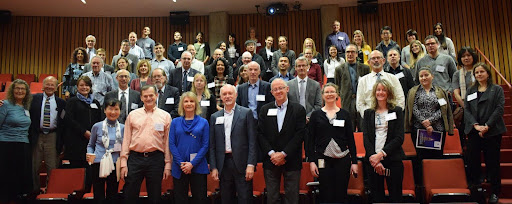
Celebrating 30 years of Science for a Safer World in Berkeley, on January 30th, 2018